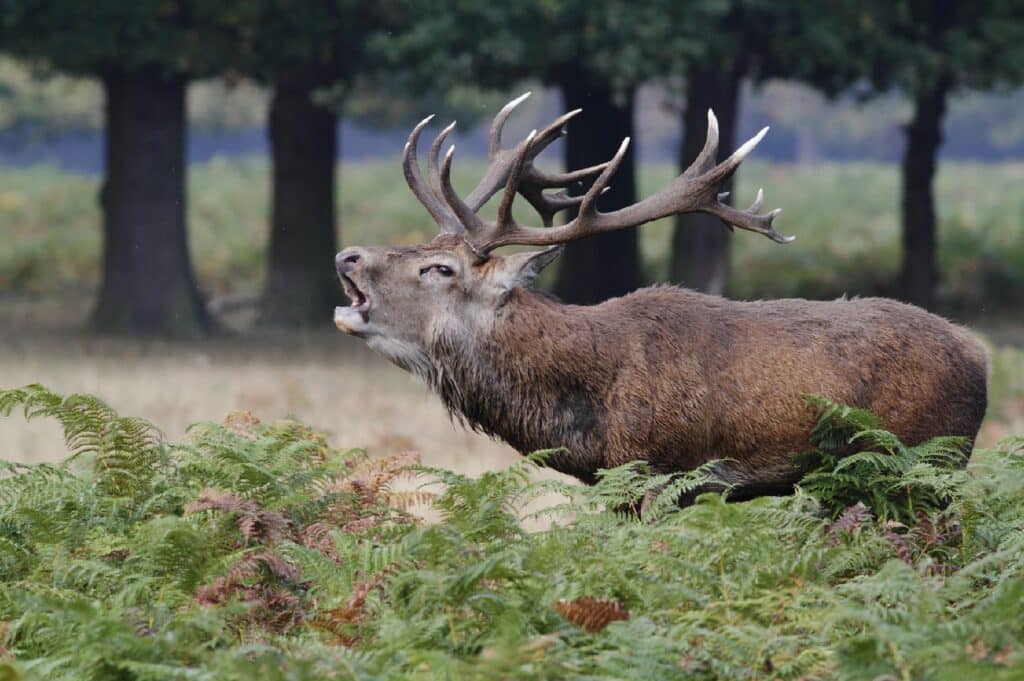England has three remaining staghound packs, two of which claim they carry out ‘research and observation’ as a cover to continue chasing and murdering deer. This is a smokescreen. But it’s permitted thanks to a glaring loophole in the Hunting Act.
Schedule 1.9 of the Hunting Act is commonly known as the “research and observation exemption”. It provides conditions under which the hunting of a wild mammal can legally occur. These include the use of no more than two dogs, the dogs do not injure the animal they’re chasing, and most importantly that the hunting is conducted for the “observation or study” of a wild mammal.
The Devon and Somerset Staghounds (DSSH) and Quantock Staghounds hunt stags and hinds two or three times a week between early August and late April. Their association, the Masters of Deerhounds Association, claim the packs monitor “the numbers, distribution and health of the herd”. But there is no evidence scientific research is undertaken in any meaningful way. In fact, the spectacle of deer hunting today is nearly identical to deer hunting before the ban.
The UK’s third remaining staghound pack, the Tiverton Staghounds, claim to follow a trail.
It didn’t start this way
Staghound packs didn’t begin the hunting ban using the research and observation exemption. They first claimed to operate under the stalking and flushing out exemption. The Quantock Staghounds were successfully challenged by the League Against Cruel Sports on this claim in a 2007 private prosecution. The same hunt then claimed it was operating under the rescue of a wild mammal during a 2010 court case using brought by the CPS using evidence from the League Against Cruel Sports. However, a judge found the huntsman guilty of illegal hunting. It was only after this that staghounds packs moved onto the research and observation exemption.
The League tried to challenge the use of this exemption twice, in 2013 and 2015.
Police charged the DSSH for a 2013 incident caught on video by the League, but charges were dropped after the hunt allegedly provided evidence of their research activities. The League’s 2017 Observed to Death report on this exemption provided explanations from a barrister on what evidence of research and observation the DSSH handed over to the CPS, causing it to drop its charges.
In summary, a defence witness that described herself as an “agriculture, conservation and wildlife consultant” claimed the DSSH has provided her with data on Exmoor deer “for over 20 years”. Furthermore, the DSSH provided “the most substantial part of the data” for a project on Exmoor deer carried out for the Exmoor and District Deer Management Society. This was done with “a number of knowledgeable individuals” from the hunt watching deer in their local area and providing necessary data.
How the research and observation loophole is exploited
At this point, you may ask what role hunting plays in gathering data through watching local deer populations? The answer is the crux of how staghound packs exploit the loophole.
Observed to Death made it clear that, legally, Schedule 1.9 does not “restrict hunting by requiring it to be solely undertaken for the purpose of observation or study”. The schedule instead says that activities carried out “for the purpose of or in connection with” research and observation is covered. The hunt’s defence then argued that the chasing of deer by hounds was carried out for the purpose of observation, and everything else during the hunt that made it look just like a pre-ban deer hunt was carried out “in connection with” this research.
This was enough to spook the CPS, who dropped its charges against three members of the DSSH.
In 2015, the League once again submitted evidence against the DSSH to police. However, due to an apparent series of administrative errors by the police, as well as the hunt claiming to use the observation and research exemption, no charges were brought.
Today, the Quantock Staghounds often claim to use the same exemption too, although it also claims to trail hunt.
There have been no further attempts to legally challenge Schedule 1.9. Nonetheless, it’s clear that a full-scale stag or hind hunt is a far cry from the spirit of the exemption. Moreover, the fact that staghound packs attempted to use two other exemptions before settling on the research and observation exemption shows that they’ve exploited the loophole opportunistically.
Grim affairs
Deer hunts are grim affairs. Hounds will chase the stag or hind until they are exhausted, with some chases taking many hours. In March 2022, North Dorset Hunt Saboteurs shared video from a hunt that saw the Quantock Staghounds chase a stag for seven hours. Once the deer is so exhausted it can no longer run, the hunt will then shoot it. After this, they will ‘carve up’ the deer, removing parts such as the antlers and heart for trophies. Offal is fed to the hounds before the rest of the body is butchered.
This happened before the ban. It is still happening today.
Staghound hunts are rarely sabbed due to their reputation for violence. And attempting to smash through the observation and research smokescreen is a tall order – for now. Instead, it’d be better to target the root of the problem: the exemption itself. The Scottish anti-hunting law, for example, contains no such similar exemptions for observation or research. And there’s no reason the English and Welsh law should either.
The loophole must be done away with entirely if we’re to end the horrifically cruel practice of deer hunting.
Support Protect the Wild’s push to remove this exemption once and for all.

